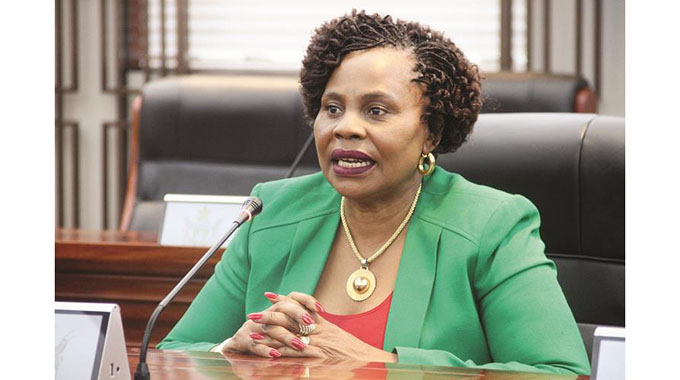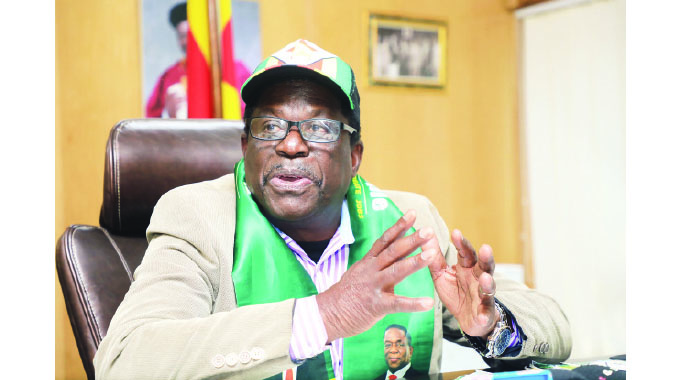Bumper harvest saves US$300m

Elita Chikwati–Senior Agriculture Reporter
The good harvest realised by Zimbabwe from the last farming season will slash the import bill by US$300 million, a senior Government official has said.
This comes as the mining and agriculture sectors have been encouraged to work together in a sustainable way.
Zimbabwe is expecting a total harvest of 2,8 million tonnes of maize and 360 000 tonnes of traditional grains from the past season as a result of the good rains, with some being kept back by producers for their own needs and much sold to the Grain Marketing Board.
Lands, Agriculture Fisheries, Water and Rural Resettlement Deputy Minister Vangelis Haritatos said the recent success in food production indicated that Zimbabwe was on course to achieve the US$8,2 billion revenue from agriculture by 2025 under the Agriculture and Food Systems Transformation Strategy.
Officiating at the Mining and Agriculture Breakfast Interface held at the Zimbabwe Agricultural Show yesterday Deputy Minister Haritatos said with the predictions of normal-to-above normal rains in the coming agricultural season, Zimbabwe was on course to reclaim its status as the bread basket of Southern Africa.
“Agriculture’s potential is reflected in the projected 34 percent growth rate for the sector this year which is a major driver of the 7,8 percent annual growth rate,” he said.
Agriculture and mining sectors were expected to collectively contribute US$20 billion to the economy in a few years’ time and could be regarded as Siamese twins, being the two primary producers.
“Mining is well known for investing heavily in agriculture. Miners are acutely aware that the resources they are exploiting are finite and will one day be exhausted so they have had the hindsight to invest in empowerment programmes that create lasting legacies,” he said.
Mining companies such as Mimosa and Zimplats partnered the Zimbabwe Agricultural Society and the Department of Livestock and Veterinary Services under the Ministry of Lands in the implementation of the Livestock Revitalisation Programme.
“Using artificial insemination animal genetics is being enhanced to create better cattle breeds which are more adopted to the environment and have better returns on the market” he said.
Deputy Minister Haritatos said mining accounted for 16 percent of GDP and 60 percent of foreign currency earnings from exports. Now an estimated 1,5 million people make a living digging for minerals, especially gold.
He said many people moved between the sectors conducting mining during the dry season and returning to farming when the agricultural seasons begins
“With the financial strength of mining, we can invest more in agriculture assured that we will have more food and a broad-based impact as the majority of our population are engaged in farming,” he said.
Mines and Mining Development Deputy Minister Polite Kambamura said it was not possible to separate mining and agriculture.
“The relationship between mining and agriculture is complex. The mining sector is critical enabler for agriculture. Some minerals also benefit the agriculture sector for instance in the manufacturing of fertilisers.
“The agriculture sector also provides important materials for the mining sector and other sectors.
Farming and mining compete. We should share the land and use through constructive co-existence. The two sectors should complement each other,” he said.
Zimbabwe Agricultural Society chief executive, Dr Andrew Matibiri said the society was proud of the partnership and synergies and collaboration it has fostered among and between miners and farmers.
“The coming together of the mining and agriculture sectors bodes well for development as the two sectors are the engines for economic growth and realisation of Government’s vision of Zimbabwe transforming into a middle income economy by 2030.
“The successful and widespread adoption of the Pfumvudza/Intwasa programme offers scope for scaling it up as it has demonstrated to be productive and is proven to be drought proof.
“This calls for mechanisation with the mining companies partnering ZAS and the Ministry of Lands in the acquisition and use of proper technology to put more land under Pfumvudza Intwasa,” he said.











Comments